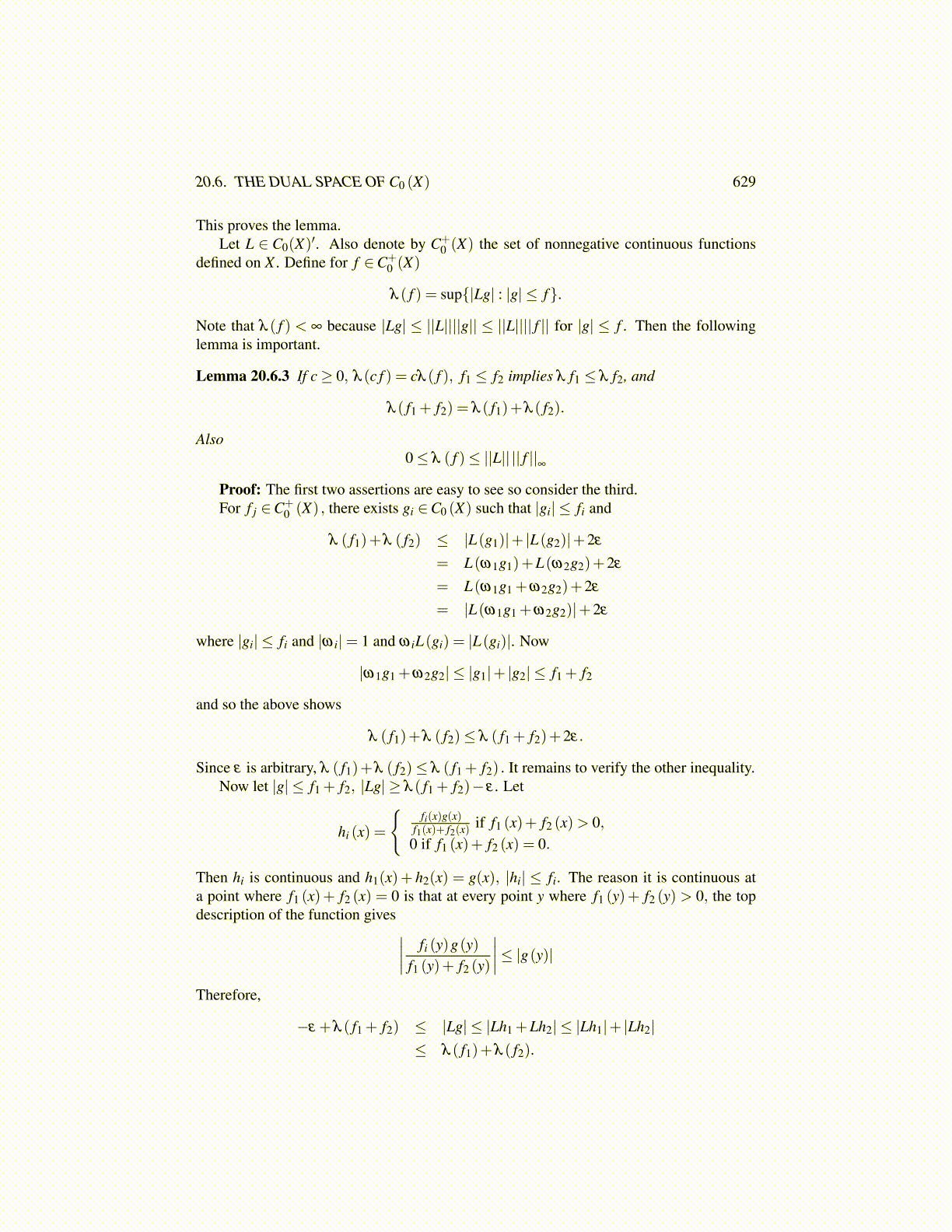
20.6. THE DUAL SPACE OF C0 (X) 629
This proves the lemma.Let L ∈ C0(X)′. Also denote by C+
0 (X) the set of nonnegative continuous functionsdefined on X . Define for f ∈C+
0 (X)
λ ( f ) = sup{|Lg| : |g| ≤ f}.
Note that λ ( f ) < ∞ because |Lg| ≤ ||L||||g|| ≤ ||L|||| f || for |g| ≤ f . Then the followinglemma is important.
Lemma 20.6.3 If c≥ 0, λ (c f ) = cλ ( f ), f1 ≤ f2 implies λ f1 ≤ λ f2, and
λ ( f1 + f2) = λ ( f1)+λ ( f2).
Also0≤ λ ( f )≤ ||L|| || f ||
∞
Proof: The first two assertions are easy to see so consider the third.For f j ∈C+
0 (X) , there exists gi ∈C0 (X) such that |gi| ≤ fi and
λ ( f1)+λ ( f2) ≤ |L(g1)|+ |L(g2)|+2ε
= L(ω1g1)+L(ω2g2)+2ε
= L(ω1g1 +ω2g2)+2ε
= |L(ω1g1 +ω2g2)|+2ε
where |gi| ≤ fi and |ω i|= 1 and ω iL(gi) = |L(gi)|. Now
|ω1g1 +ω2g2| ≤ |g1|+ |g2| ≤ f1 + f2
and so the above shows
λ ( f1)+λ ( f2)≤ λ ( f1 + f2)+2ε.
Since ε is arbitrary, λ ( f1)+λ ( f2)≤ λ ( f1 + f2) . It remains to verify the other inequality.Now let |g| ≤ f1 + f2, |Lg| ≥ λ ( f1 + f2)− ε . Let
hi (x) =
{fi(x)g(x)
f1(x)+ f2(x)if f1 (x)+ f2 (x)> 0,
0 if f1 (x)+ f2 (x) = 0.
Then hi is continuous and h1(x)+ h2(x) = g(x), |hi| ≤ fi. The reason it is continuous ata point where f1 (x)+ f2 (x) = 0 is that at every point y where f1 (y)+ f2 (y) > 0, the topdescription of the function gives ∣∣∣∣ fi (y)g(y)
f1 (y)+ f2 (y)
∣∣∣∣≤ |g(y)|Therefore,
−ε +λ ( f1 + f2) ≤ |Lg| ≤ |Lh1 +Lh2| ≤ |Lh1|+ |Lh2|≤ λ ( f1)+λ ( f2).